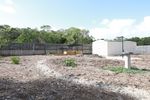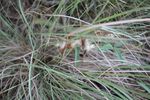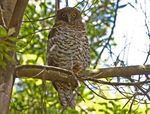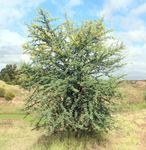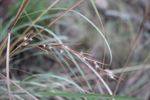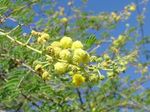Pioneer Catchment & Landcare News - August 2021
←
→
Page content transcription
If your browser does not render page correctly, please read the page content below
Pioneer Catchment & Landcare News
August 2021
Reef Assist Program Conservation in Action Showcase
Reef Assist Program (RAP) stakeholders from across Greater Mackay-
Whitsunday-Isaac took a bus tour on July 14, visiting a showcase of
revegetation and weed control program sites.
The region’s RAP program is delivered by Reef Catchments in partnership
with Pioneer Catchment Landcare, Sarina Landcare Catchment Management
Association and Whitsunday Catchment Landcare.
RAP teams work with landholders to control weeds and plant native species.
Properties are prioritised in order to have the most impact on restoration of
riparian zones, wildlife corridors and at-risk ecosystems.
The Reef Assist Program Conservation In Action Showcase highlighted the
wide range of conservation works and training carried out by Reef
Catchments and the Landcare groups across the Mackay Isaac Whitsunday
region, through funding received from the Queensland Government’s Reef
Assist Program.
The showcase was attended by the Reef Assist teams, Landcare staff and
Management Committee members, representatives from the State
Government Reef Partnerships program and Reef Catchments staff.
Representing PCL were our RAP team Darrell Barba and Sabrina Black, and
PCL Chairperson Sharon Dwyer.
“PCL is proud to be partnered with Reef Catchments to deliver activities in the
Reef Assist Program showcased.
Reef Assist Programme,” Ms Dwyer said. Photos: (top) Saskia von Fahland, SCLMA;
(bottom) A. Bown, Reef Catchments
“It was a privilege to join the RAP bus tour to observe some of the projects
being performed in our region. The tour gave valuable insight into how local residents take ownership of areas when weed
control and revegetation programs are implemented. By breaking projects into smaller, longer-term activities, the sense of pride
in achievement and visual impact of work performed can be maximised.”
Get Set for Great Northern Clean-Up
The Great Northern Clean-Up is once again ready to roll this month, with
Pioneer Catchment Landcare once again joining with Conservation Volunteers
Australia and Mackay Regional Council to tackle a perennial littering along the
northern bank of our beautiful blue-water river: Riverside Drive, Cremorne.
The clean up will kick off from 9:30am on Sunday, August 29.
The event joins an array of clean-up events around the catchment; keep an eye
on the clean-up web page for more info.
All gloves, bags, litter pickers, hand sanitiser etc. will be provided, but a must
2020: Some of the keen cleaner-uppers who stepped up for have for participants is closed in shoes, sun-safe clothes, wide-brimmed hat and
the Great Northern Clean-Up Riverside Drive event held last a water bottle, and Under 14s need to be accompanied by an adult.
September, with PCL project officer Tom Crow (right).
Photo: PCL
Sign up or donate at www.cleanupaustraliaday.org.au/fundraisers/
carolinehoodhood/riverside-drivePlant of the Month Cymbopogon ambiguus Australian Lemon Grass; Scented Oil Grass Family: Poaceae Australian Lemon Grass (Cymbopogon ambiguus) is a heat, frost and drought-hardy perennial native grass with a sweet strong citrus aroma. It is common across most areas of Australia, except cold temperate and occurs up to 900m above sea level. It typically grows at forest edge zones, including rainforest, eucalypt forest, within wooded grasslands and vine thickets. Leaves: Grows in dense clumps (caespitose) up to 1.5m high, but typically to 1m. Lower leaves have a persistent long sheath, prominently veined with fine to no hairs. Green to blue-green blade is folded, and less than 4mm wide with fine, whitish (glaucous) coating. Flowers & Seeds: Several longer flowering stems hold flowering clusters (racemes) along one-third of their length (15-25mm), enclosed in a spathe (sheath) when immature, opening to reveal densely haired spikelets 6-7mm, with small, orange-brown seeds. Growing: Cymbopogon ambiguus needs a sunny position and will tolerate very dry conditions when established. Propagation is by division of clumps or from seed. Lemon grass can be grown in any soil and tolerates regular cutting. Uses: Makes a pleasant tasting aromatic tea, and has been used as a steam inhalation and tea for colds, and Photos: Kirili Lamb, PCL topically for sores, by First Nations cultures. Sources: Australian National Botanic Gardens Centre for Australian National Biodiversity Research: Australian Tropical Rainforest Plants Edition 7 www.canbr.gov.au/cpbr/cd-keys/RFK7/key/RFK7/Media/Html/entities/Cymbopogon_ambiguus.htm. ; Cape York NRM capeyorknrm.com.au/landmanager/biodiversity/grasses/mitchell-river-fan-aggregation/cymbopogon- ambiguus ; Atlas of Living Australia bie.ala.org.au ; tuckerbush.com.au/native-lemongrass-cymbopogon-ambiguus/. Pest Spotting Vachellia nilotica subsp. indica Prickly Acacia Family: Mimosaceae Dryland weed Prickly Acacia is occasionally found in localised areas of the southern part of the Mackay region. Identified here in a 2018 DAF survey, the small thorny tree can grow to 5-10m (although generally at the lower end of that range in this region). It is adapted to the conditions that occur in most areas of Queensland, including areas to the south and north of the Mackay region, in Bowen and Rockhampton. Initially introduced as a shade and fodder tree for the cattle industry, the Indian exotic legume has since become a Weed of National Significance. It has a propensity to form thickets and can infest waterways, compromising biodiversity. Leaves and stems: Prickly Acacia’s leaves are fern-like, with 4-10 pairs of leaf branches, each bearing 10-20 pairs of narrow green leaflets. Thorns are paired, stout, generally around 1-5cm long, and bark on saplings has a tinge of orange and/or green, older trees have dark, rough bark and develop an umbrella shaped canopy, with fewer thorns. Flowers: Occur in late February and are golden-yellow, ball-shaped, growing on stems from leaf joints with 2-6 flowers per group. Fruit: Seed pods are flat, 10-15cm, with narrow constrictions between seeds, greyish when ripe (October to January). A medium sized tree can produce 175,000 seeds annually, remaining viable in soil for upwards of Photos: Queensland Government seven years. Sources: Queensland Government DAF Fact Sheet; DAF 2018 Prickly Acacia Distribution map Mackay Regional Council: www.mackay.qld.gov.au/environment/natural_environment/animals_and_plants/plants_of_the_region 2. Pioneer Catchment & Landcare News: August, 2021
Land for Wildlife
Rodenticide risks: keep it friendly for native wildlife
Introduced rats (Rattus rattus) and mice (Mus musculus) present challenges for landholders
of all types, but use of some rodenticides presents an unintended threat not only to native
rodents, but their predators, such as raptor species like eagles, and owls.
Because introduced rodents can impact crops, and fodder storage, they have heavily impact-
ed the agricultural sector, while in more urban settings there have been public health implica-
tions. While mechanical and lower impact chemical controls had some effect, the introduction of
anti-coagulants like Warfarin and Coumatetralyl in the 1950s exercised a real impact on rodent
populations. Fast forward to the 1970s and 80s, and concerns around resistance to these led to
the development of “second generation anti-coagulant rodenticides” (SGAR) . SGAR active con-
stituents include Brodifacoum, Bromadiolone, Difenacoum, Difethialone and Flocoumafen (the
latter two are used only by professional pest controllers).
These SGARs contain more potent compounds that not only kill ani-
mals that consume the bait, but radiate along the food chain to im-
pact predator species through secondary poisoning, persisting with- LOCAL PREDATOR: Powerful Owl.
Photo: Birdlife Australia
in tissues and organs for months to years. A 2018 study of declining
populations of Southern Boobook Owls (Ninox boobook) in Western Australia showed
The Pale Field Rat (Rattus tunneyi) is a native
anti-coagulants were found in livers of 72.6% of deceased owls tested, including fledg-
rodent of this region. Photo: Queensland Muse- lings. Higher figures have been recorded in UK barn owls and kestrels. While the US,
Canada and EU have banned general public use of SGARs, the Australian Pesticides and Veterinary Medicines Author-
ity, following public consultation in 2020, has determined to address only labelling issues, and remain in retail.
Sources: owlfriendly.org.au/rodent-control/ ; birdlife.org.au/rodent-control; www.lfwseq.org.au/pest-rodent-control-without-harming-
owls/ ; apvma.gov.au/node/78756 ; Lohr, M.T (2018) Anticoagulant rodenticide exposure in an Australian predatory bird increases with prox-
imity to developed habitat. Science of the Total Environment 643: 134-144.
Gardens for Wildlife
Re-Wilding Our Suburban Garden—Part 1
By Jenny White, PCL member and regular volunteer
I’m passionate about our natural world and all that’s in it,
including people. How, in our everyday lives, can we connect
with the incredible pleasure to be found in nature and in turn
allow nature and all that’s in it to be part of our lives?
The primary aim of my husband John and I was to re-wild our
garden, creating a habitat that would provide food, shelter and a
home for a diversity of wildlife. Except for a small vegie bed, our
800m2 block was devoid of any meaningful life.
Starting in July 2019, we brought in 70m3 of forest mulch to
Early Plantings with Mulch and Pebble Paths . Photos: Jenny White
provide a 150mm base that would kill off the weeds, break down
over time to create soil and produce a nutrient base for the
plants. The soil below is sand: our block had been denuded of
sand dunes and their ecosystem for development.
For the paths, black plastic mat was topped with smallish pebbles.
They were “soft” paths that could be easily changed.
The Slade Point Nature Reserve out back gave us a wonderful
borrowed space for our overall garden view.
In turn, our garden would grow to provide the wildlife out back
with another space to inhabit, forage, feed and breed in.
Pioneer Catchment & Landcare News: August, 2021 3.Upcoming Events
August
PCL’S ID:
Sun 1 - National Tree Day
Sun 1 - Birdlife Mackay Outing: Berri Werri Ck, Gargett. Meet: C10041933
Tourist Info Centre Nebo Road 6:30am. Ph: 0407143823
Tue 3 - PCL Volunteering in the display garden. 8am to 12pm. VOLUNTEERING AT PCL
Thu 5 - Native Plants Queensland (Mackay Branch) meeting Every Tuesday, a happy band of volunteers come together for a
7:30pm at Mackay Regional Botanic Gardens meeting room range of activities that help make Landcare tick, whether it’s
Sat 7— Reef Catchments Litter Trap Audit, Slade Point down re-veg planting by the sea at Far Beach, developing our
Community Gardens 9-11.30am. Visit www.eventbrite.com.au/ lovely display garden, or talking plants and life while working at
e/gross-pollutant-trap-audit-tickets-163594370165 the nursery propagation tables at Mackay Natural Environment
Tue 10 - PCL Volunteering– Lamberts Lookout. 8am to 12pm. Centre. Come join us! To get involved, contact Project Officer
Sat 14-Friends of Morag McNichol Reserve working bee 8-10am Tom Crow at projectofficer@pioneercatchment.org.au
Sat 14 - Mackay Community Garden Abundance Day, 10am
Sat 14 - Birdlife Mackay General Meeting Botanic Gardens Pioneer Catchment & Landcare Group Inc.
Conference Room 9:30am 0418776594 Management Committee
Tue 17 - PCL Volunteering at Far Beach. 8am to 12pm. Executive Committee Members
Sun 19 - Birdlife Mackay Outing: Blacks Beach Cove. Ph: Dave Hunter
ChairǀSharon Dwyer
0407143823
Tue 24 - PCL Volunteering in the nursery. 8am to 12pm. Deputy ChairǀDianne Williams Judith Wake
Fri 27 - Birdlife Mackay- Mackay Regional Botanic Gardens SecretaryǀFran Mann
Survey On the Deck 6:30am Ph:0411887546
TreasurerǀNancy Pratt
Tue 31 - PCL Volunteering in the nursery. 8am to 12pm.
September
Pioneer Catchment & Landcare Group Inc.
Thu 2 - Native Plants Queensland (Mackay Branch) meeting
7:30pm at Mackay Regional Botanic Gardens meeting room
Office contacts:
Sat 4 - Reef Catchments Tilapia Takedown, 8.30-11am, Phone ǀ 07 4944 1979
Gooseponds North Mackay. Info: reefcatchments.com.au/events Email | admin@pioneercatchment.org.au
Sat 4 - Birdlife Mackay Outing: Padaminka, meet Tourist info Website ǀ www.pioneercatchment.org.au
Centre, Nebo Rd. Ph: 0407143823
Tue 7 - PCL Volunteering in the display garden. 8am to 12pm. Coordinator ǀ
Sat 11-Friends of Morag McNichol Reserve working bee 8-10am coordinator@pioneercatchment.org.au
13–17 - Birdlife Mackay Eungella Bird Week Ph: 0407143823 Matt Birch ǀ Acting Project Officer ǀ 0497 006 606
Tue 14 - PCL Volunteering in the nursery. 8am to 12pm. projectofficer@pioneercatchment.org.au
Sat 14 - Mackay Community Garden Abundance Day, 10am Tahnee Hamillǀ Administration Officer ǀ
Tue 21 - PCL Volunteering at Far Beach. 8am to 12pm. admin@pioneercatchment.org.au
Pioneer Catchment & Landcare Group Inc. Proudly supported by:
POSTAGE
August 2021 PAID
AUSTRALIA
If unable to be delivered please return to
Pioneer Catchment & Landcare Group Inc.
P0 Box 3181
NORTH MACKAY LPO Qld 4740
Printed newsletters are on 100% recycled & carbon-neutral paper. For full colour version via e-mail contact PCLYou can also read




